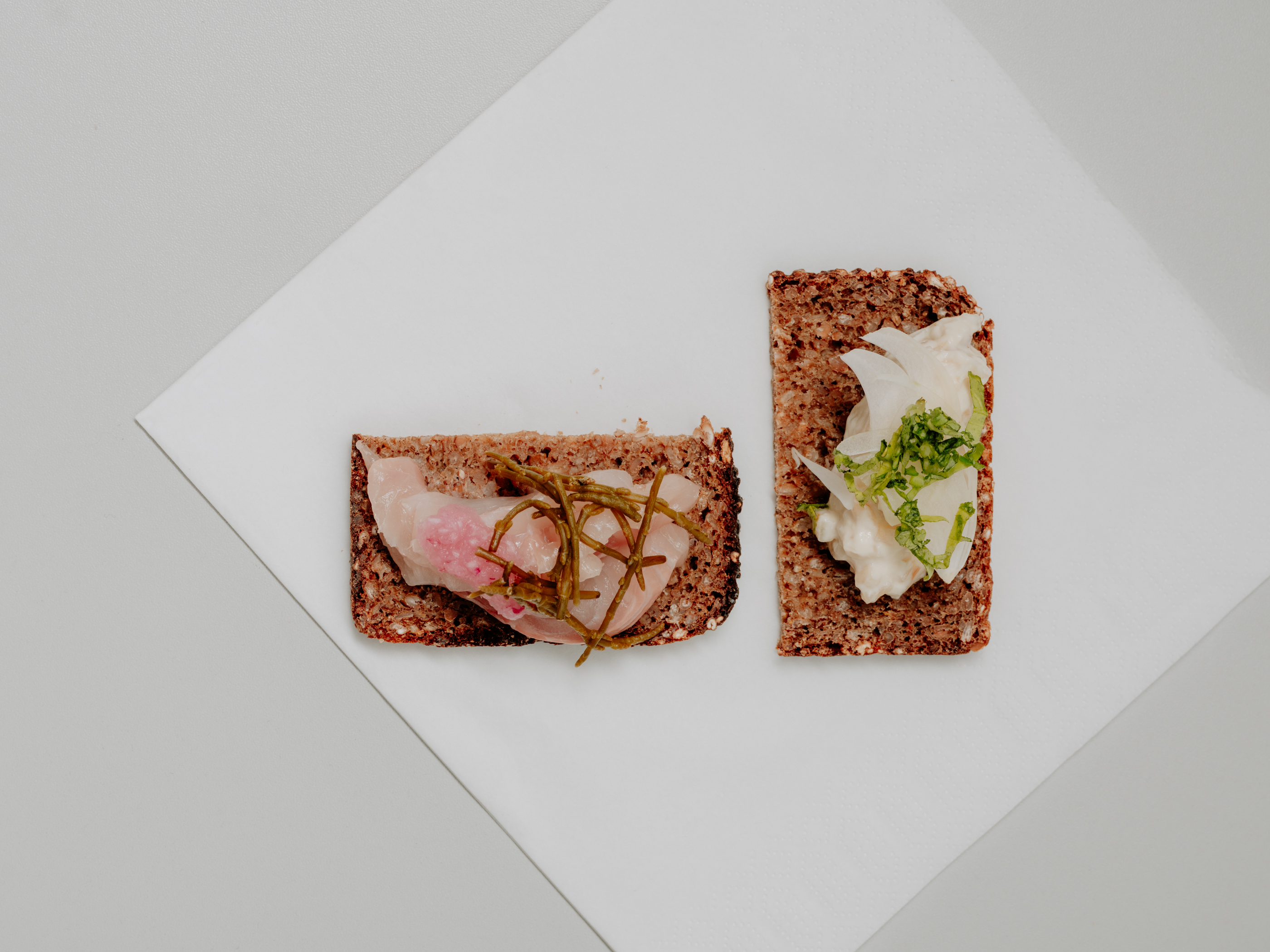Fischbrötchen with Pickled Salicornia
The project Salt Dykes is a serious invitation to let the imagination (the capability to generate images as a tool for learning and forming) be dragged on the other side of the membrane, to make culture permeable and adapt it to changing, non-linear, non-dichotomous conditions.
The menu is an exercise to the taste as a means to defy the general understanding or practicing of spaces and edibility, hence the paradox. Recipes records no weight or measures, no procedural or serving hints but a way to think about ingredients and reframe their value as such.

rye bread- the typical fischbrötchen, snack to harbour workers and hangover remedy on Sunday mornings, generally comes enclosed in a warm rosetta roll. In Venice we have recently nurtured the bad habit of serving snacks on slices of bread, a use that we apparently share with Copenhagen. Open to allure and oxidation.
fish- it includes virtually any fish available on the market, dragged inland by the imponent commercial fishing fleet, fried, marinated or fried and then marinated. Yes, inland because Hamburg harbour, the biggest in Germany (which makes it one of the biggest in Europe) is actually several kilometres away from the coast, nested in the bed of Elbe river. The definition extends to shellfish and crustaceans too, yet for some reasons not to the freshwater fish inhabiting the river. Possibly a statement of Hamburg city-state claims as a maritime commercial power and a rejection of the fluvial heritage. But it could also be related to the fact that in the 80s of the past century, the Elbe used to be so polluted to be considered no longer suitable for life. According to a report by Joseph Beuys of 1983/84 in the river there were no fish.
The fish used in this case is Huchen (Hucho hucho), a freshwater relative of salmon native to rivers across Central Europe now considered endangered due to habitat fragmentation as a consequence of damming in the major European rivers. It was sourced for us from a repopulation programme in the Alps by the fishmonger Sebastian Baier, served slightly poached.
remoulade- is a sauce of French origins (as most sauces) related to tartare sauce apparently very dear to Hamburg people who claim it as a sort of national pride. It can’t be missed in the fischbrötchen. The original recipes can easily be found online, this is made with finely cubed celeriac stewed in apple juice from the Alteland then incorporated in quark (a sort of quantum physics inspired cottage cheese, very popular in Germany) and garnished with raw white onion slices and radish leaves (the root is instead grated on the fish).
pickled salicornia- it is the most famous of the halophytes, or salt-tolerant plants even if no one knows it. Known in Germany as Queller, it can be found on the coast North of Hamburg subject to massive tides. Cattle are let to graze on tidal, brackish pastures but people are not allowed to harvest it. The same prohibition is applied in the Venetian Lagoon where we farmed the one used in this menu.
The fischbrötchen of Fisch&So at the gross fish market in the port of Hamburg has the same to me of the first jelly eel I had in London, familiar, absolutely alien, anachronistic, beyond time and therefore unforgettable.
